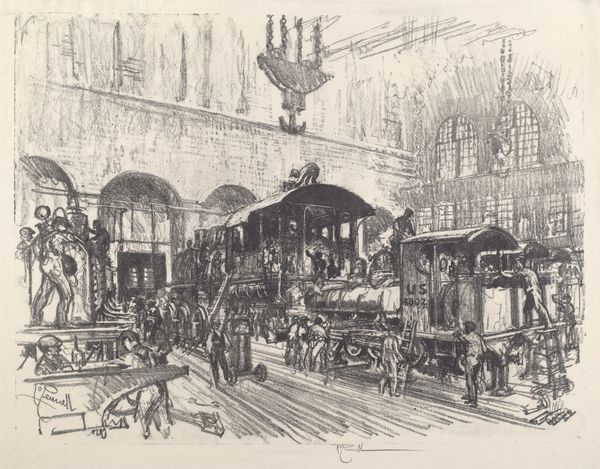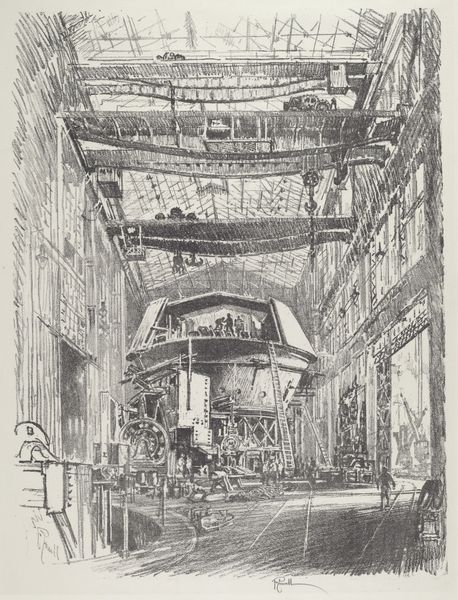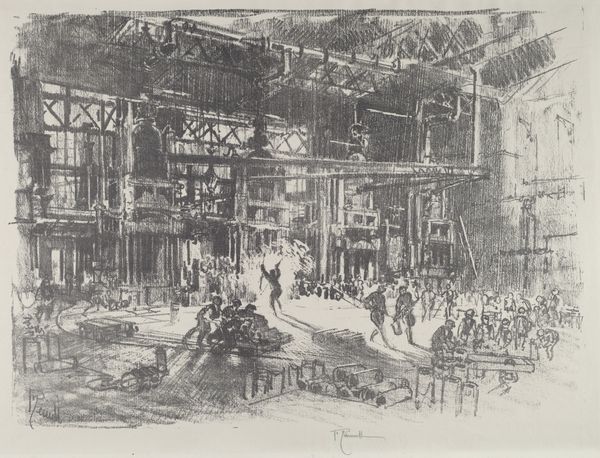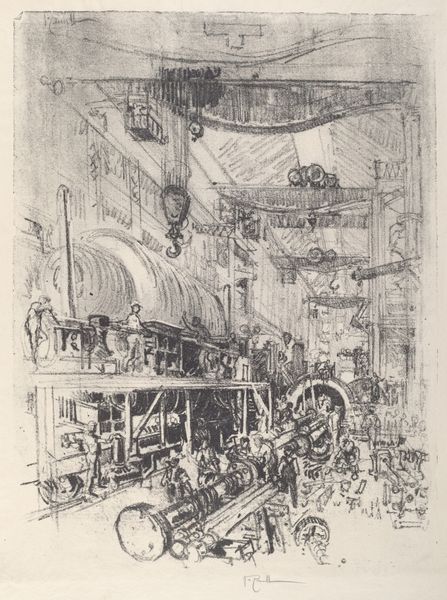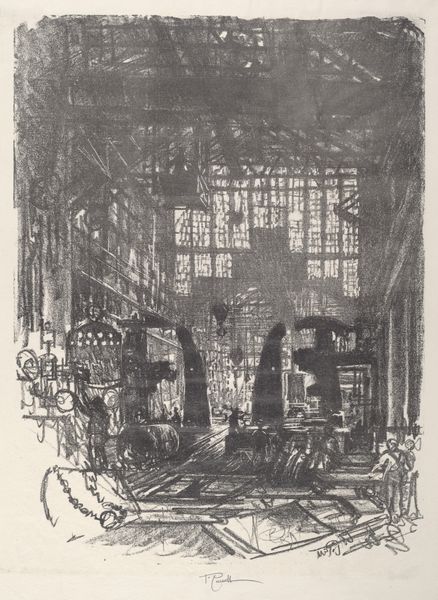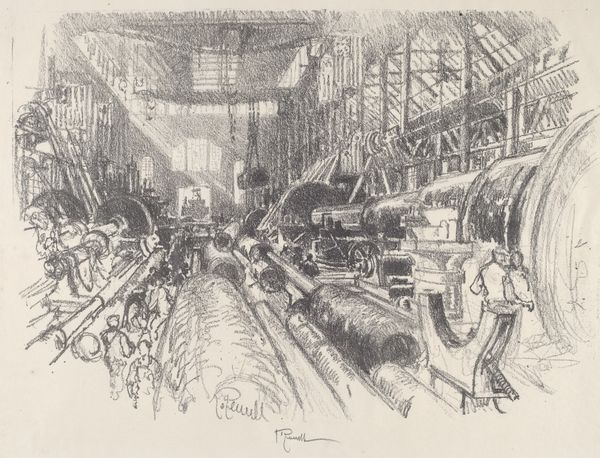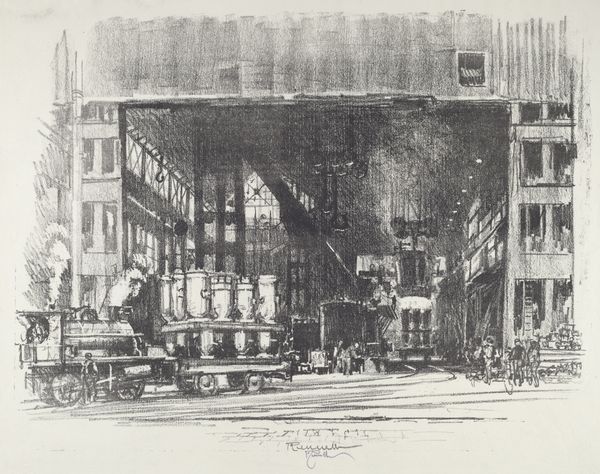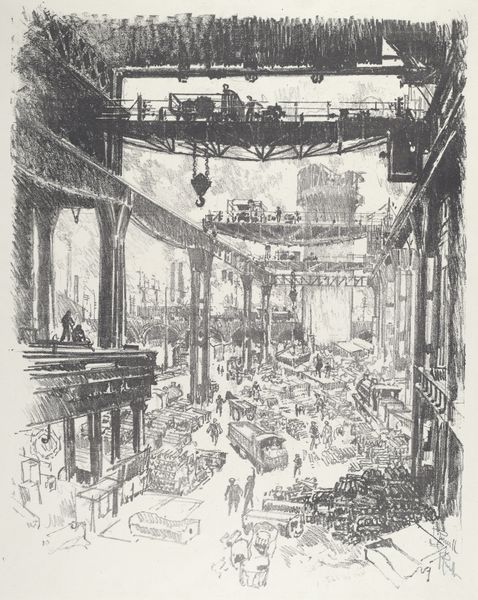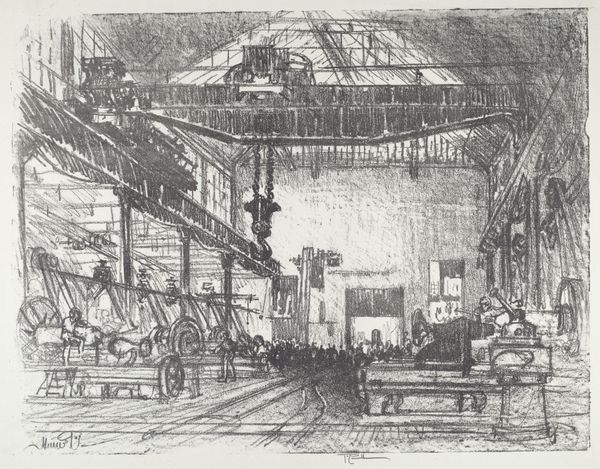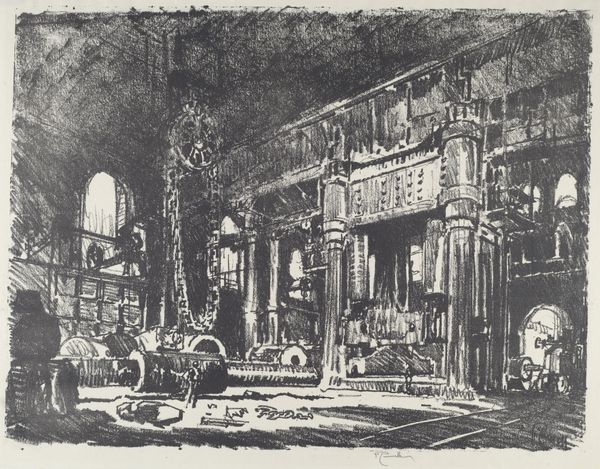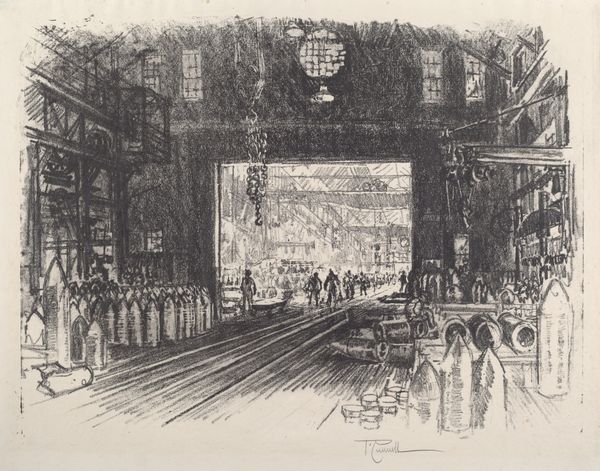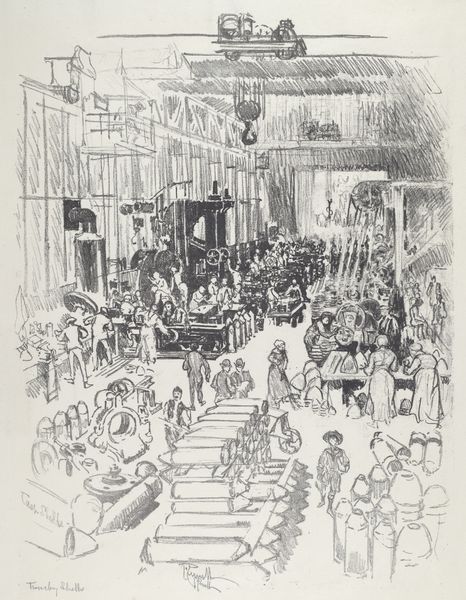
print, etching
# print
#
etching
#
landscape
#
modernism
#
realism
Copyright: National Gallery of Art: CC0 1.0
Editor: This is "Shell Factory, No. I," an etching by Joseph Pennell, made in 1917. The overwhelming feeling is the immensity of it all. What stands out to me is how Pennell captures the industrial scale alongside these tiny human figures. How do you interpret this work? Curator: Well, placing this image in its historical moment, 1917, we are deep in World War I. The scale you mentioned, and Pennell's focus on industrial might, speaks to the evolving public role of art during total war. Consider how governments, including the US where Pennell resided, employed artists to depict the war effort, but often avoided directly showing the gruesome realities of the conflict. What's implied, versus what's overtly stated? Editor: So it's a kind of visual propaganda, emphasizing the power behind the lines rather than the suffering on the front? Curator: Precisely. Think about how this image would have been received. Pennell presents a seemingly heroic vision of American industrial power, suggesting technological prowess and a capability to overwhelm the enemy through material production. The light streaming through the factory almost gives it a cathedral-like aura, don't you think? This wasn't just about documenting; it was about shaping public perception. Do you see any tension between the supposed progress and the destructive purpose these shells ultimately serve? Editor: Now that you point it out, yes. The almost religious light feels unsettling, given what is actually being manufactured. It's not just industry, but the industry of war, glorified. I hadn't thought about the political dimensions so explicitly. Curator: Context is key. Remembering that artistic creations always happen within—and are shaped by—socio-political and economic structures, changes how we engage with art. Editor: Absolutely, seeing it as more than just a picture, but as a statement about a specific moment and the artist’s position within it, adds a whole new level of understanding. Curator: Indeed. Thinking critically about the institutional forces behind art, such as state-sponsored war efforts, provides crucial insights.
Comments
No comments
Be the first to comment and join the conversation on the ultimate creative platform.
